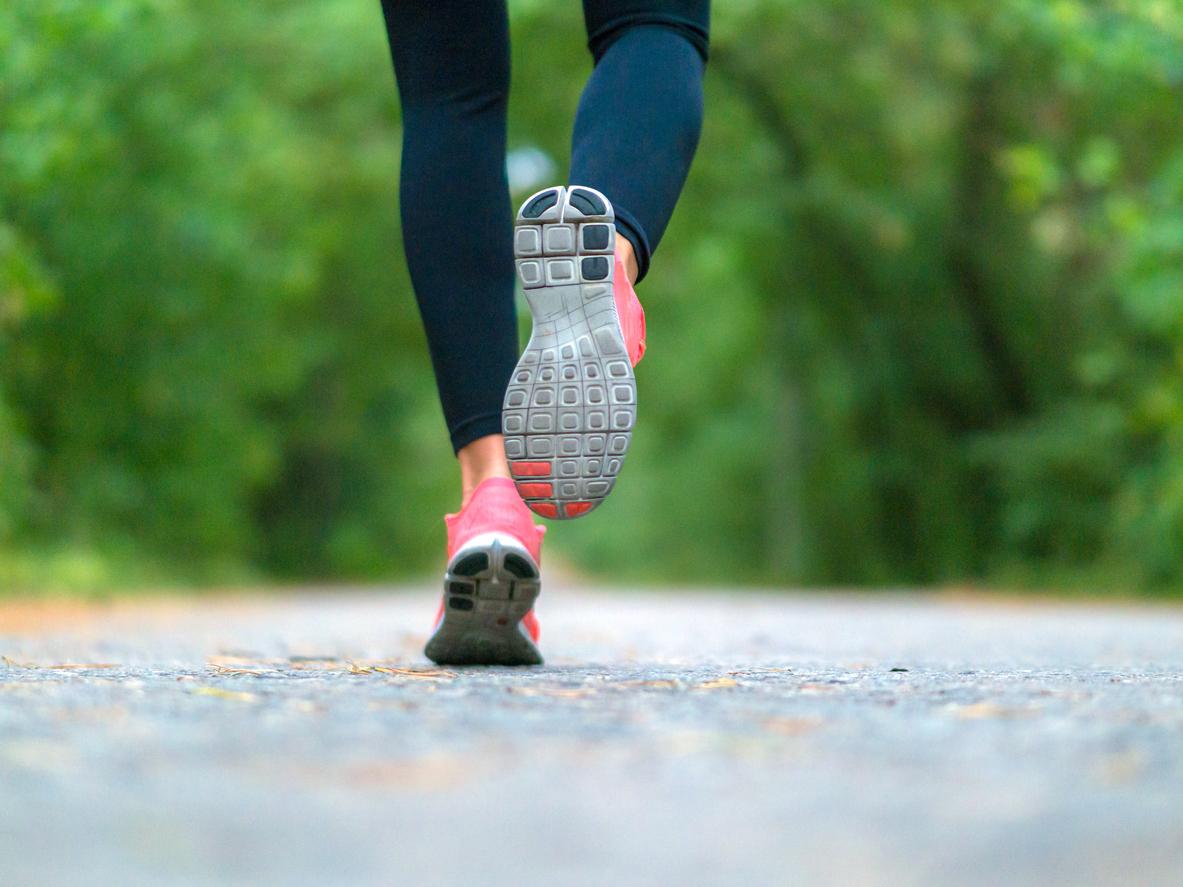More than the number of steps, it is the pace of walking that is important for increasing metabolic expenditure and therefore losing more weight, according to a new study.

- Varying step length may be more beneficial than the total number taken, in terms of metabolic expenditure.
- A 1% increase in step variability corresponds to a 0.7% increase in energy used.
- It’s important to walk every day – or do some other physical activity – to stay healthy.
To be healthy, the Ministry of Sports recommends doing at least the equivalent of 30 minutes of brisk walking (which significantly increases the heart rate), at least five days a week.
Vary step length for better metabolic expenditure
But are all ways of walking equal? No, according to a new study published in the journal bioRxiv. For better metabolic expenditure, varying the pace would be more effective than the number of steps.
“We assume that more frequent and larger variations in step length increase your metabolic expenditure while walking.“, says Adam Grimmitt, one of the authors, DailyMail. And if metabolic expenditure increases, so does calorie expenditure.
To achieve these results, the scientists followed the walking of 18 healthy adults. They were, on average, 24 years old and weighed 70.5 kg. They made them follow two tests.
In a first experiment, participants had to walk normally – at a constant pace – for five minutes on a treadmill. The average stride was 1.2 meters per second.
In a second experiment, participants still walked on a mat, but the researchers lit up the steps they were asked to take so that the length of their steps varied. Compared to the average stride, the positions varied by 5 to 10 percent, either up or down. During this test, the walkers were fitted with a mouthpiece that measured their carbon dioxide production rate.
Result: for every 1% increase in step variability, there was a 0.7% increase in energy use. Having uneven strides therefore allows for greater metabolic expenditure.
“Based on our data, a 2.7% increase in step length variability would increase metabolic expenditure by 1.7%.explain the authors. Step length variability plays a modest, but significant, role in the metabolic expenditure of walking.”
Walk or play sports several times a week
The researchers nevertheless acknowledge that their work is more difficult to apply in everyday life because it is difficult to have such precision in terms of variation in walking.
According to World Health Organization (WHO), from 18 years of age, adults “should engage in at least 150 minutes of moderate-intensity endurance activity or at least 75 minutes of vigorous-intensity endurance activity, or an equivalent combination of moderate- and vigorous-intensity activity, during the week.”
In these minutes, you can incorporate a whole bunch of moments: sport of course, but also leisure activities, household chores or even travel, provided that they are done by bike or on foot!
















